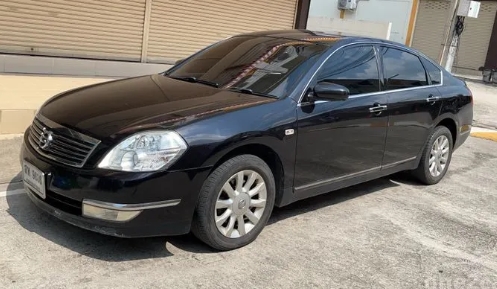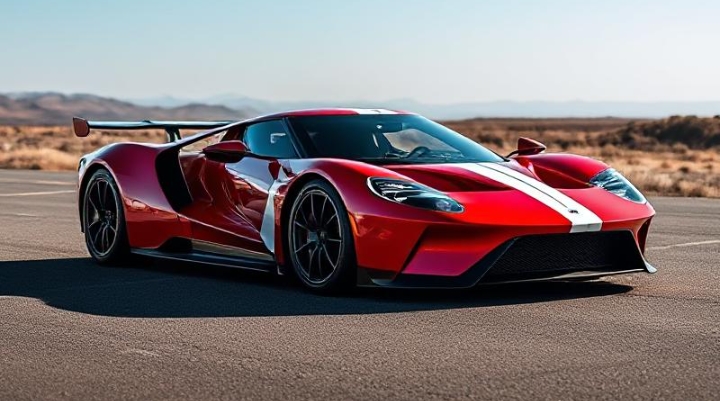The Nissan Titan Tale: Charting the Evolution of Nissan’s Full-Size Contender
In the early 2000s, the American full-size pickup truck market was an impenetrable fortress, a bastion of domestic dominance ruled by Ford’s F-Series, Chevrolet’s Silverado, and Dodge’s Ram. It was a segment built on generations of loyalty, brand identity, and a deep understanding of the American work ethic. Into this Goliath-filled arena stepped an ambitious David: Nissan. Armed with a clean-sheet design, a powerful V8, and a host of innovative features, the Nissan Titan was engineered not just to compete, but to challenge the very foundations of the market. Its two-decade journey is a compelling story of bold ambition, innovative thinking, and the harsh realities of competing against deeply entrenched giants.
First Generation (A60): The Bold Challenger (2004-2015)
After years of development under the leadership of chief product specialist Larry Dominique, the Nissan Titan made its grand debut for the 2004 model year. It was built on the rugged, fully-boxed ladder frame of Nissan’s F-Alpha platform, a foundation shared with the Armada SUV and Xterra. This was a clear signal of intent; Nissan was not building a “lifestyle” truck but a genuine workhorse engineered for durability.
The Powertrain: From its inception, the Titan differentiated itself by eschewing a base V6 engine. Every single first-generation Titan was powered by the formidable 5.6-liter “Endurance” VK56DE V8 engine. Initially, this all-aluminum DOHC powerhouse produced a class-leading 305 horsepower and 379 lb-ft of torque, which was later bumped to 317 horsepower and 385 lb-ft of torque in 2007. This potent V8 was paired exclusively with a smooth 5-speed automatic transmission, offering robust performance that often outshone the base and even mid-tier V8s of its American rivals.
Configurations and Innovations: Nissan offered the Titan in two configurations: the King Cab, which featured innovative rear-hinged “suicide” doors that could open nearly 180 degrees for unparalleled access to the rear cabin, and the more traditional four-door Crew Cab.
Where the Titan truly shone was its clever features. Nissan studied the competition and addressed common owner frustrations with thoughtful solutions:
- Utili-track Channel System: A groundbreaking cargo management system in the bed featuring channels on the floor, header, and sides, allowing for infinitely adjustable tie-down cleats.
- Factory Spray-In Bedliner: A first in the segment, offering superior durability and a clean, integrated look compared to aftermarket drop-in liners.
- Lockable Bedside Storage: A small, weather-tight storage compartment integrated into the driver’s side rear fender, perfect for storing tow-straps, jumper cables, or a small toolkit.
Trim Levels (2004-2015): The first-generation Titan’s trim structure was straightforward, evolving slightly over its long lifespan.
- XE (2004-2015): The base work-truck model. It was spartan but capable, featuring 17-inch steel wheels, manual windows and locks in its early years, a simple cloth bench seat, and the standard Endurance V8. It was the no-frills choice for fleet buyers and those who valued capability over comfort.
- SE (2004-2015): The volume-selling, mid-grade trim. The SE added popular features like 18-inch alloy wheels, power windows and locks, cruise control, chrome bumpers, and upgraded cloth upholstery with available captain’s chairs. Various option packages could add features like a premium sound system, towing package, and the Utili-track system.
- LE (2004-2015): The luxury-oriented top trim. The LE came loaded with leather-appointed seating, a Rockford Fosgate premium audio system, power-adjustable pedals, heated seats, and later, navigation. It was Nissan’s answer to models like the F-150 Lariat and Silverado LTZ.
- PRO-4X (2008-2015): Introduced with the 2008 model year refresh, the PRO-4X was a game-changer for the Titan lineup. It was a dedicated off-road package available only in 4×4 configuration. It bundled aggressive styling with functional hardware, including an electronic locking rear differential, Rancho off-road shock absorbers, robust skid plates protecting the oil pan and transfer case, and rugged all-terrain tires. The PRO-4X gave the Titan a direct competitor to the Z71s and FX4s of the world and became one of its most popular and enduring trims.
Despite its strong debut, the first-generation Titan’s long production run (12 years) with only a minor cosmetic and interior refresh in 2008 caused it to age significantly against a rapidly evolving competitive landscape. A planned partnership with Chrysler to build a Ram-based Titan fell apart during the 2008 financial crisis, leaving Nissan to soldier on with its aging platform until a complete redesign was ready.
.
THIS is GOOD stuff if your car is in need:

.
Second Generation (A61): A Two-Pronged Attack (2016-2024)
After a long hiatus, Nissan roared back with a completely redesigned Titan for the 2016 model year. This time, the strategy was far more ambitious: a two-truck approach designed to carve out a new niche in the market.
The Titan XD (2016): The “In-Betweener” Nissan launched the second generation with the brawnier Titan XD. This truck was not a direct half-ton (1500) or three-quarter-ton (2500) competitor. Instead, it was marketed as a “heavy half-ton,” blending the towing and hauling capabilities of a light-duty heavy-duty truck with the ride comfort and daily drivability of a half-ton. The XD featured a unique, fully-boxed, commercial-grade frame that was heavier and more robust than its standard counterpart.
The XD’s headline feature was the available 5.0-liter Cummins V8 Turbo Diesel. This partnership with the legendary engine maker yielded an engine producing 310 horsepower and a massive 555 lb-ft of torque, giving the XD confident towing muscle and a distinctive diesel clatter that resonated with serious truck enthusiasts.
The Standard Titan (2017): The Mainstream Fighter One year after the XD’s launch, the standard, half-ton Titan arrived for the 2017 model year. While it shared its cab and styling with the XD, it was built on a completely separate, lighter, and shorter frame. This model was designed to compete directly with the F-150, Silverado 1500, and Ram 1500.
Both trucks were powered by a heavily revised 5.6-liter Endurance V8. Now featuring direct injection and Nissan’s Variable Valve Event and Lift (VVEL) technology, it produced a much healthier 390 horsepower and 394 lb-ft of torque. Initially paired with a 7-speed automatic transmission, it offered a significant leap in refinement and power.
Trim Levels (2016-2024): The second generation adopted a more modern and expansive trim walk, available on both the Titan and Titan XD models.
- S: The entry-level model. It offered base essentials like a simple infotainment system, vinyl or cloth seating, and steel wheels. It was aimed at commercial and fleet customers.
- SV: The heart of the lineup. The SV added alloy wheels, chrome exterior accents, upgraded interior trim, and access to a wider range of technology and comfort packages, including a popular Convenience Package.
- PRO-4X: Returning as the dedicated off-road model (4×4 only), the second-gen PRO-4X was more capable than ever. It included Bilstein mono-tube off-road shocks, an electronic locking rear differential, hill descent control, full underbody skid plating, and unique interior and exterior styling with signature red tow hooks.
- SL: The first step into luxury. The SL model came standard with 20-inch wheels, leather upholstery, a premium Fender audio system, LED lighting, heated seats, and a suite of driver aids.
- Platinum Reserve: The ultimate Titan. This top-tier trim offered a truly premium experience with two-tone premium quilted leather seats, open-pore wood trim, heated and cooled front seats, heated rear seats, a heated steering wheel, and a full suite of standard technology and safety features.
The 2020 Mid-Cycle Refresh: For the 2020 model year, Nissan gave the Titan a significant update to keep it competitive.
- Standard Power: The 5.6-liter Endurance V8 became the sole engine choice (the Cummins diesel was discontinued due to low sales volume). Its output was boosted to a best-in-class standard 400 horsepower and 413 lb-ft of torque.
- New Transmission: A new 9-speed automatic transmission replaced the 7-speed, offering a wider gear ratio for better acceleration and efficiency.
- Updated Styling: The Titan received a new “Powerful Warrior” front-end design with a more aggressive grille and new LED headlights, along with a revised tailgate.
- Standard Safety: Nissan Safety Shield 360, a suite of advanced driver-assistance systems including Automatic Emergency Braking with Pedestrian Detection, Blind Spot Warning, and Lane Departure Warning, became standard on every trim level—a major selling point.
The End of an Era (2024)
Despite the impressive engineering of the second generation and the substantial 2020 refresh, the Titan struggled to make a significant dent in the market share of its rivals. The XD’s “in-between” strategy never fully resonated with buyers, who tended to either stick with traditional half-tons or step up to a true heavy-duty truck. The standard Titan, while a capable and reliable truck, found it nearly impossible to break the fierce brand loyalty that defines the segment.
In 2023, Nissan announced that the Titan would be discontinued after the 2024 model year. The decision reflects a shifting automotive landscape, with Nissan, like many automakers, reallocating resources towards the development of electric vehicles.
The Nissan Titan’s journey may be ending, but its legacy is one of courage and innovation. It was a truck that dared to challenge the status quo, introducing features that the entire industry would later adopt. From its powerful standard V8 and Utili-track system in the first generation to the bold Cummins experiment and class-leading standard safety tech in the second, the Titan was always a thoughtfully engineered, highly capable, and worthy contender. While it may not have conquered the mountain, its tale is a testament to the fact that even in a land of giants, a Titan can leave a lasting footprint.







